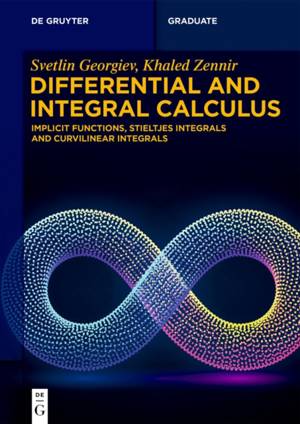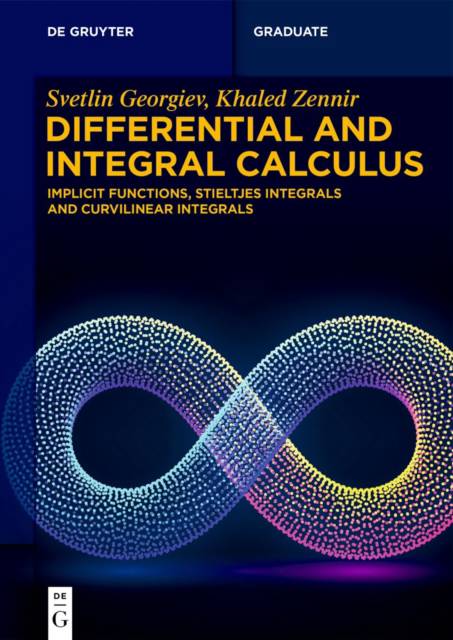
Je cadeautjes zeker op tijd in huis hebben voor de feestdagen? Kom langs in onze winkels en vind het perfecte geschenk!
- Afhalen na 1 uur in een winkel met voorraad
- Gratis thuislevering in België vanaf € 30
- Ruim aanbod met 7 miljoen producten
Je cadeautjes zeker op tijd in huis hebben voor de feestdagen? Kom langs in onze winkels en vind het perfecte geschenk!
- Afhalen na 1 uur in een winkel met voorraad
- Gratis thuislevering in België vanaf € 30
- Ruim aanbod met 7 miljoen producten
Zoeken
Differential and Integral Calculus
Implicit Functions, Stieltjes Integrals and Curvilinear Integrals
Svetlin G Georgiev, Khaled Zennir
€ 135,45
+ 270 punten
Omschrijving
The book contains six chapters. In Chapter 1, the set Rn is defined. n-dimensional ball, sphere, and rectangular neighborhood of a point are defined. Sequences in Rn are defined by their properties. Open, closed and compact sets in Rn are investigated. The Heine-Borel theorem is formulated and proved. In Chapter 2, functions of several variables are introduced. Limits of functions of several variables are defined with their properties are deducted. Continuous functions of several variables are investigated. Uniform continuity is introduced and explored. In Chapter 3, partial derivatives of higher order and differentials for functions of several variables and their properties are introduced. Criteria for the differentiability of functions of several variables are deducted. Gradient of a function explored. Directional derivatives are defined and investigated. In Chapter 4, higher order partial derivatives of functions of several variables are investigated. The minimum and maximum of functions of several variables are introduced and investigated. Implicit functions are defined and explored. The method of Lagrange multipliers is introduced. The book contains proofs, numerous examples, and exercises with solutions in the two last chapters.
Specificaties
Betrokkenen
- Auteur(s):
- Uitgeverij:
Inhoud
- Aantal bladzijden:
- 390
- Taal:
- Engels
- Reeks:
Eigenschappen
- Productcode (EAN):
- 9783119144629
- Verschijningsdatum:
- 3/11/2025
- Uitvoering:
- Paperback
- Formaat:
- Trade paperback (VS)
- Afmetingen:
- 170 mm x 244 mm
- Gewicht:
- 548 g

Alleen bij Standaard Boekhandel
+ 270 punten op je klantenkaart van Standaard Boekhandel
Beoordelingen
We publiceren alleen reviews die voldoen aan de voorwaarden voor reviews. Bekijk onze voorwaarden voor reviews.









